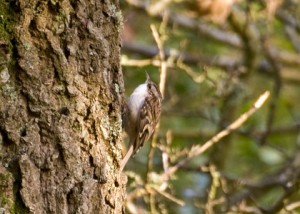
January is a quiet month after all the New Year festivities and in terms of wildlife it feels a bit bleak, with trees stripped bare of leaves and many animals in hibernation, the woods seem to be in a deep slumber.
Not surprisingly, January is a month associated with deep reflection as we look back at the year departed and look forward with new hopes. In Greek mythology Janus, for which January is named, is the god of beginnings, transitions and endings. Janus is depicted as having two faces, to look at the future and to the past. We also need time to stop and reflect, and nature can provide the perfect medium to do this. Read on for some ‘woodland therapy’ ideas.
Woodlands can seem empty and unwelcoming places to explore at this time of year. But to be still for a moment and simply observe the pace of nature can be both comforting and enlightening. In fact, if you know where to look there are still things to see and do.
- Once in the woods, take a few breaths, give your body a brisk shake, as a way of releasing tension, and close your eyes. Take a deep breath. Notice how your body feels in this moment and how your feet connect to the Earth.
- Now tune your attention to your hearing: notice the quietest sound you can hear. Is it near or far away? Can you hear any woodland birds? Listen out for tiny, high pitched noises – the calls made by birds such as tits, treecreepers or goldcrests to keep in contact with each other. Now open your eyes. Follow the sounds until they are loud enough to hear clearly. Now stand still and make a loud ‘pish-pish-pish’ sound. Keep repeating and eventually the birds will get curious and come to investigate.
- With your senses now fully alert, walk as silently as possible like a fox through the woodland. Pause when something catches your attention. Here are some things to listen and look for to help guide you – often we don’t notice things because of our fast pace.
- Woodpeckers have begun drumming against the tree trunks as they try to attract a female. In broadleaved woodlands this will be the male great spotted woodpecker. He is mainly black and white with a splash of red plumage under his tail.
- You might be lucky enough to spot a treecreeper. With its mottled brown upper feathers its almost camouflaged against the bark as it works its way upwards in a spiral round the trunks of broadleaved trees; using its narrow downward-curving bill to dig out insects and spiders hidden in the cracks and crevices of the wood.
- Evergreens such as holly and ivy always add a splash of welcome colour to the winter landscape. Round balls of mistletoe, which are often mistaken for bird nests, are easy to spot amongst the bare branches of broadleaved trees, particularly fruit trees such crab apple and hawthorn.
- Find a sit spot – a special and comfortable place to meditate using your senses. Notice how your skin feels. Can you feel a breeze? Which direction is it coming from? Are there any scents on the breeze? Are you feeling thirsty? Now bring your awareness to your sense of hearing – what is the furthest sound your ears can hear? When you feel ready, open your eyes, as if this is the first time they have seen this place. What are you noticing?
Before leaving, thank the woodland for welcoming you. What did you most enjoy about the space and time?
